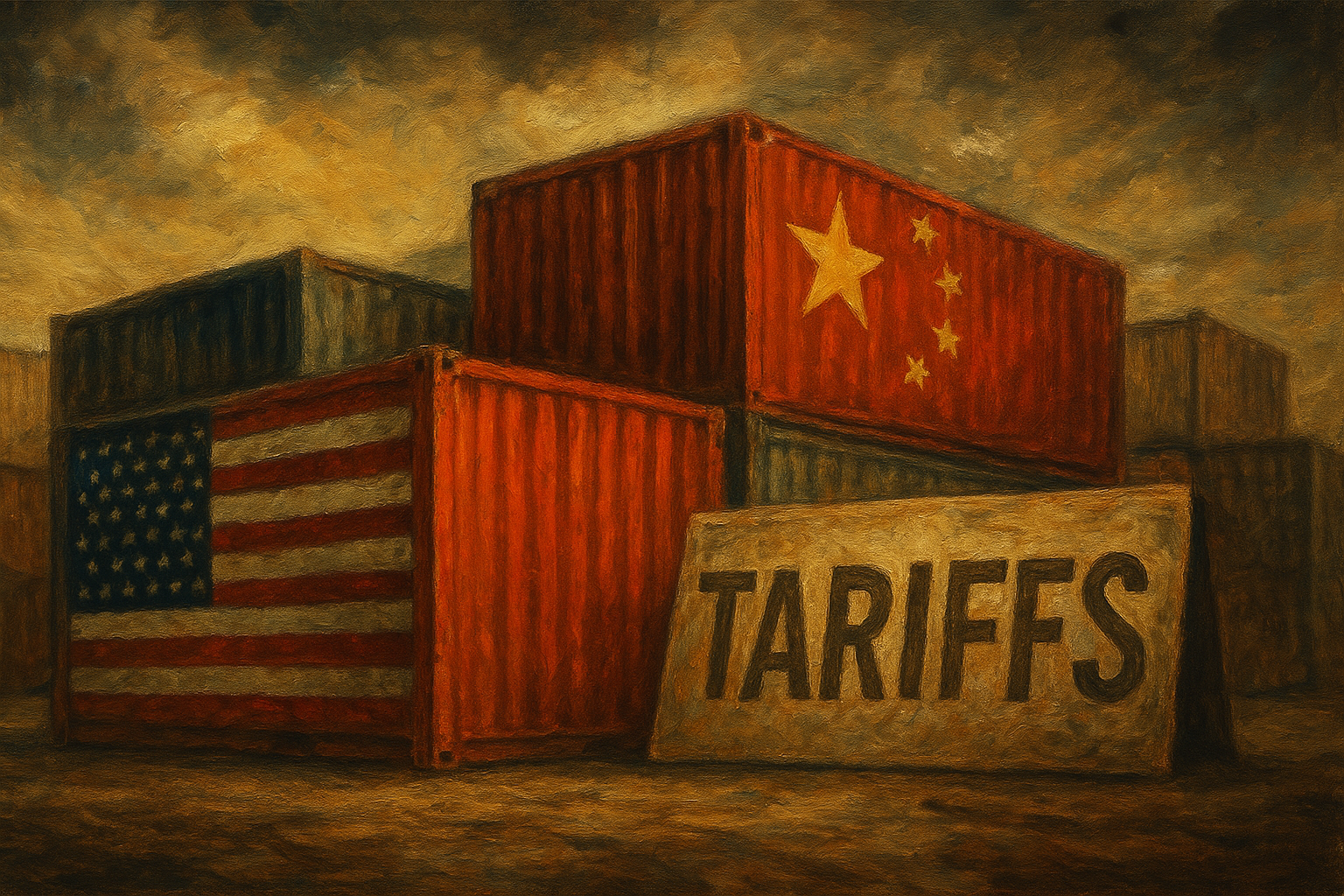You’ve heard of planetary boundaries? Those measures which tell us how we are disrupting the safe operating space that permits life on earth. The more we breach those boundaries, the more the safe operating space shrinks. We’ve now breached six out of nine of them. Vital signs of planetary health are flashing red, meaning we’re at risk of abrupt and irreversible changes to the Earth System that could erode and undermine the planet’s capacity to support life.
The planetary boundaries framework has provided us with one of the most powerful scientific lenses to understand the scale of the crisis facing humanity at a species-level today. This is a necessary picture of the grave symptoms of how the Human System is increasingly disrupting critical planetary life-support systems.
But a crucial feature of this moment is not captured by this picture. This feature is simple, but absolutely seminal, and it boils down to this: the looming obsolescence of the industrial order is part and parcel of a civilisational-scale metamorphosis in which a whole new Human System is emerging.
Humans are not outside the earth system
The planetary boundaries framework is focused, as it must be, on how the Earth System works, and how we can measure – to the best of our limited instruments – when its key sub-systems are likely to tip over into dangerous new states. But to really understand how and why we are breaching planetary boundaries, we need to take a step back and look at how human systems are operating today, and how they relate to earth systems.
This intersection between human and earth systems has preoccupied much of my work in systems theory over the last two decades. I attempted to synthesise and advance much of this work in a new peer-reviewed paper, ‘“Planetary phase shift” as a new systems framework to navigate the evolutionary transformation of human civilisation’, published in Foresight: The Journal of Futures Studies.
The concept of a ‘planetary phase shift’ captures something much broader because it attempts to integrate dynamics occurring across both human and earth systems. It speaks to the idea that the entire human-earth system is in a state of fundamental transformation – that a new human-earth system is emerging.
That process could take the form of a breakdown, at worst culminating in societal collapse as we breach planetary boundaries. But it could also culminate in a breakthrough to a new, better, more capable and more stable system; one that, instead of breaching planetary boundaries, respects them; one that, instead of disrupting ecological systems, regenerates them.
Wake up: the system is changing
Much of the ‘system change’ discourse and practice that prevails today fails to recognise the absolutely fundamental reality that human civilisation is undergoing a comprehensive systemic transformation. To be sure, the shape of the emerging system is unclear. And that’s because it’s not shaped yet and could become a range of different things, positive or negative, evolutionary or regressive.
One thing is clear, though. The system is not going to be the same.
My paper develops a new transdisciplinary theoretical model to scientifically understand and track this planetary-scale systemic transformation, so that we can make better choices about how to respond. You can read the full paper here:

And here's a more digestible quick-read news summary from IFLScience.
One of the frameworks that centres the entire paper is something called the ‘adaptive cycle’, identified in particular by CS Holling. I've written about this frequently here at AoT.
The adaptive cycle is a four-stage life-cycle of growth, stabilisation, breakdown and renewal which can be seen operating across all natural systems – including social systems, economic systems and civilisational systems. This paper is an attempt to explore more rigorously how the adaptive cycle operates at a civilisational scale, and what this means.
To do this, I also draw on ‘phase transition’ theory, which looks at how systems change abruptly at chemical and biological levels; disruptive technologies to track the key material phase transitions at play right now; and organisational change to explore the interplay between technology and society.
The result is a big picture vision of how industrial civilisation appears to be moving through the last two stages of its current life-cycle: breakdown and renewal, or, to use Holling’s terms, release and reorganisation.
By assessing this idea against available empirical data, the paper is able to test its veracity and reach the conclusion that the planetary scale adaptive cycle is not just an interesting metaphor. Rather, it actually reflects the core dynamics of change in human civilisation.
Giant leap?
Planetary phase shift theory sees the material and cultural dimensions of civilisation as mutually constituted and therefore inherently entwined. This means that the foundational technologies of industrial civilisation are bound up with the prevailing industrial organising system or OS.
To survive and thrive, a civilisation’s OS has to manage and regulate our technological infrastructure within planetary boundaries. But much of the conversation around this is being done in a strange vacuum that fails to grapple directly with the fact that the technological infrastructure of our civilisation is, right now, in the throes of multiple phase transitions driving a whole system phase transformation.
As I've written about extensively at AoT, every fundamental technological system that defines civilisation – energy, transport, food, materials and information – is experiencing a phase transition in which incumbent industrial age technologies are being disrupted. They are on track to being outcompeted and replaced by a new set of technologies across all these sectors.
The empirical data across these sectors shows that the entire material and technological infrastructure of human civilisation is experiencing fundamental transformation. In my paper, I set out to review this data from across the literature and bring it together into a coherent synthesis.
Central to the current transformation is energy. Declining energy return on investment (EROI) from fossil fuels will inevitably drive incumbent industries to decline and obsolescence within decades. Meanwhile, solar, wind and batteries are the three pillar technologies where we can see rapid, exponential change that is on track to transform the global electricity system in this time-frame. Unlike oil, gas and coal, these renewable technologies experience improving EROI the more they are deployed.
We see a similar challenge in information, where new technologies to analyse and distribute complex information are becoming ubiquitous. From digital media to artificial intelligence, as the technologies become cheaper they are becoming more widely available. In turn, the chance for anyone to become a producer and distributor of information on a large-scale is becoming far more decentralised.
A key insight of planetary phase shift theory is that such technology disruptions, driven forward by fundamental economic factors, are really biophysical in nature because their improving economic competitiveness is a proxy for improving energy efficiency. They are getting better at fulfilling a specific social purpose, but they are also doing so with less energy per unit than before. Economically, this manifests as exponentially improving costs and capabilities.
Analysing these material trends together reveals that the entire biophysical infrastructure of our civilisation is in a period of metamorphosis as the incumbent centralised fossil fuel-centric system declines. Over the next few decades, it will be increasingly replaced by a new system based on the distributed production of energy from renewable resources via networked electrification.
If designed optimally, my paper shows, we will be able to dramatically reduce the material footprint of this system while nevertheless generating far more energy than is even possible within the current system. This is why I call this possibility space a form of postmaterialist, networked superabundance.
Or widening gap?
Seeing this through the lens of planetary phase shift theory grounds the analysis of these material trends in the context of their inherently intertwined overlap with cultural and organisational structures, values and ideas in wider society.
The biophysical transformation that is occurring is only one part of the equation, concerning the material-technological infrastructure of civilisation. For civilisation to successfully transform, it must also transform its cultural-organisational structures at all scales – otherwise the biophysical transformation too may fail. Yet right now, we remain trapped in the industrial age OS, whose centralised hierarchies were developed to manage the old declining system.
Due to plummeting costs and improving performance, credible empirically-grounded forecasts show that renewables will inevitably outcompete fossil fuels by around mid-century. The problem is that this is not happening fast enough to avoid dangerous climate change. The other problem is that if the transition is mismanaged it could create chaos. And yet another problem is that if deployed within the conventional industrial OS, the emerging system could create other negative consequences.
In other words, we are on the cusp of a ‘giant leap’ in our material capabilities as a species; but we are in danger of aborting that leap, falling into a new dark age – if not into total collapse – if we attempt to take the leap from within the outmoded framework of the old industrial OS. The industrial OS is incapable of regulating and governing the emerging system of postmaterialist networked abundance.
Premised on narrow, reductionist and extreme materialist values, a worldview that elevates the maximisation of human material consumption as the overriding goal, this OS is simply incapable of managing a new system that is inherently networked, distributed and participatory – and that must respect planetary boundaries. Further, it is only with an OS that recognises the importance of regenerating the earth, rather than simply extracting from it without limits, that we can be empowered to design the emerging system so it circulates wealth and materials for the benefit of all, and for the health of the planet.
That’s why it’s crucial for us to recognise planetary phase shift theory’s perhaps most crucial finding: that we face, for the first time in human history, the possibility of creating a truly ecological civilisation – by leveraging the best of our material innovations and cultural knowledge.
Uncertain futures
By highlighting these dynamics, planetary phase shift theory draws attention to the critical choices we need to make at all scales about the systemic risks and opportunities emerging right now and over the foreseeable future.
There are fundamental choices ahead about both the material and cultural trends we are experiencing, and we need to recognise that these go hand-in-hand, and cannot be made sense of as if they are in isolation from one another.
For instance, there are some technologies that are far better than others (solar, wind and batteries should be deployed before hydrogen); but equally, there are also transformative and regressive ways of designing and deploying those technologies (if we built cross-border interconnections to share energy, this would have amazing benefits, but if we took a nationalist closed-border approach, this would actually be worse for everyone; if we supersized solar and wind generation we would need less batteries, and the system would be much cheaper while producing more energy; if we didn’t, we’d produce far less energy in a system that’s more materials intensive).
So if we do not harness the defining advantages of these technologies by optimising them appropriately, we could also create systems which are dysfunctional. But design optimisation also has specific implications for social, political and economic relations, for who and how these technologies are owned and deployed: to redesign the industrial OS will entail social struggle.
If the emerging clean energy system is owned and controlled by billionaire oligarchs, for instance, this would lead to myriad problems. If we failed to invest in deployment in developing countries, where sunlight is often an order of magnitude more abundant, we would not just slow the deployment for poorer countries, but would fail to capitalise on the most abundant sources of clean energy that could contribute to our collective prosperity.
On the upside, if we ensured that the emerging system was owned closer to the point of production by individuals, households and businesses, accompanied by freedom to share and exchange it, this would create a new type of energy commons that could distribute prosperity in ways that were unthinkable in the old system.
So how we choose to design these material systems is, of course, not just about ‘materials’. It’s also, simultaneously, about what we value. About what we are really committed to. About our worldview and how we choose to show up in the world. About how we govern, and how we manage our social and cultural institutions.
The ‘homo economicus’ values of the old system might tempt us to avoid investing in circular economy methods and technologies, because they cut into our near-term profits for shareholders. But the ‘planetary’ values of a more adaptive, emerging system would encourage us, instead, to see the circular economy as an investment in our collective heritage and our own life-support systems, contributing to the long-term health and prosperity of our production systems, and the natural systems they depend on. This helps guarantee the viability of continued business and investment in the first place.
System change
Many current ‘system change’ approaches – especially ones based on ‘backcasting’ by imagining a desirable future and attempting to work backwards to how we can get there – are often not grounded in a realistic assessment of both the limitations and possibilities around us today.
Often, we are so focused on the admittedly horrifying symptoms of the ongoing collapse of the prevailing industrial paradigm, that we are inattentive to the significance of the real shoots of material and cultural reorganisation that are emerging today. Those shoots of reorganisation can be both negative and positive, but the reality is they are happening, and we need to make choices about them at a species-level.
Perhaps the most exciting thing about planetary phase shift theory is that it highlights what’s truly possible. The empirical data shows unequivocally that, if we took the ‘pure’ forecasts of material trends and imagined that we deployed them rationally, without weird hang-ups, incumbent barriers, self-flagellating narcissism or regressive self-defeating culture wars, we have the ability to rapidly transition to a new ecological civilisation that could provide abundant energy, materials, food, transportation, and knowledge to all without hurting the earth. This looks like a new Human-Earth System in which humans stop seeing themselves as separate from each other and from the planet, but finally recognise ourselves as integrally interconnected with each other as part of the earth herself.
Yet planetary phase shift theory is not sanguine about the risks ahead, and goes to pains to make clear that the window of opportunity to achieve this possibility space is rapidly closing on our current path. At worst, we are at risk of slamming the window shut if we do not begin to make far more planetary-oriented decisions at all levels.
Which is why I wrote this paper in the first place: to distil a rigorous, scientifically-grounded framework to guide decision-making so that we can mitigate the regressive impacts of the ‘release’ stage and empower the forces of ‘reorganisation’ – to maximise chances of moving into a whole new flourishing life-cycle for humanity.
Meaningful system change work has to not simply imagine system change ideas and scenarios in a vacuum, but specifically manage and enhance the transformation currently underway. We need to work from where we are, and with what we have. This requires an approach that grapples with the mutually constituted nature of technology and society - and that, in turn, requires coming to grips with which technologies are scaling, which are worth accelerating, and how they should be designed, structured, owned and guided in the context of a new socio-political, economic and cultural paradigm of planetary stewardship.
If you appreciated this piece, you can keep this free newsletter alive and thriving by joining our community as a Supporter for the price of a cup of coffee a month.
Already have an account? Log In








